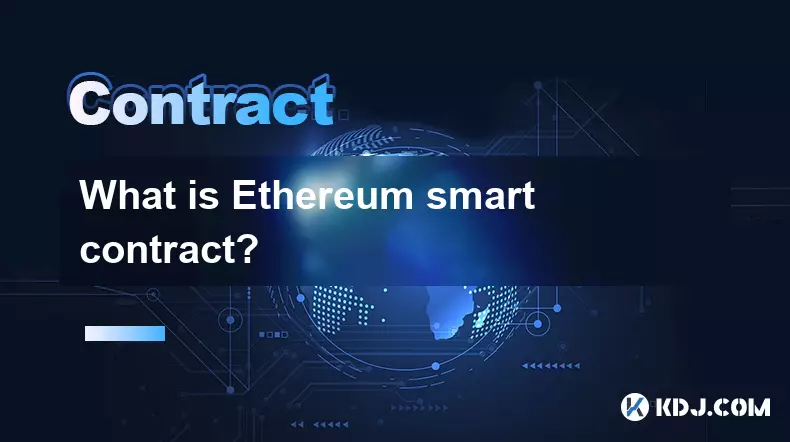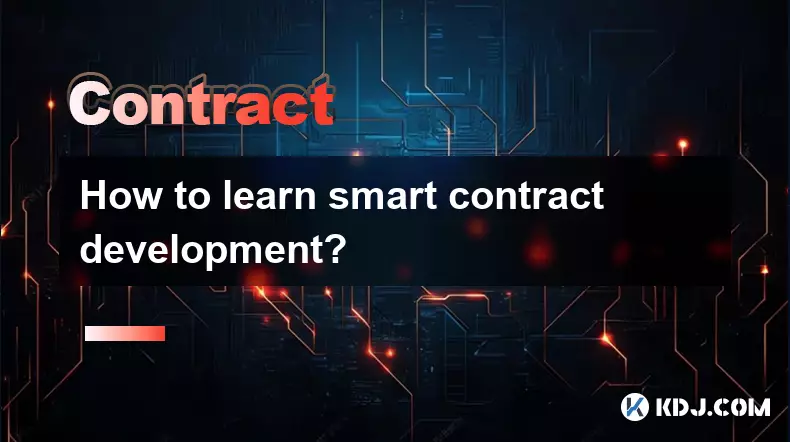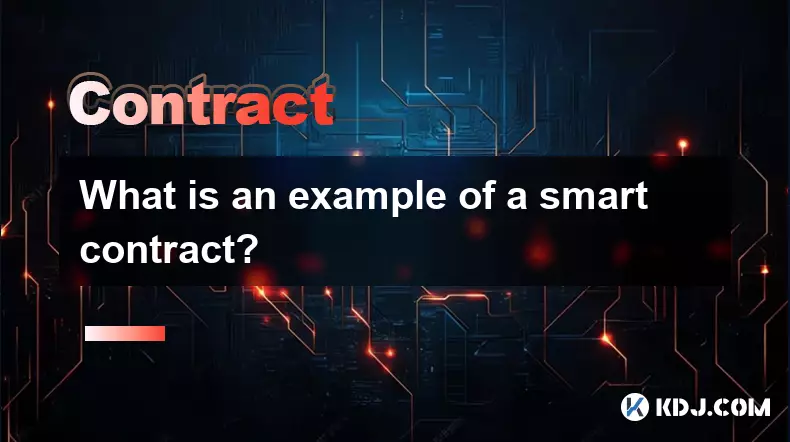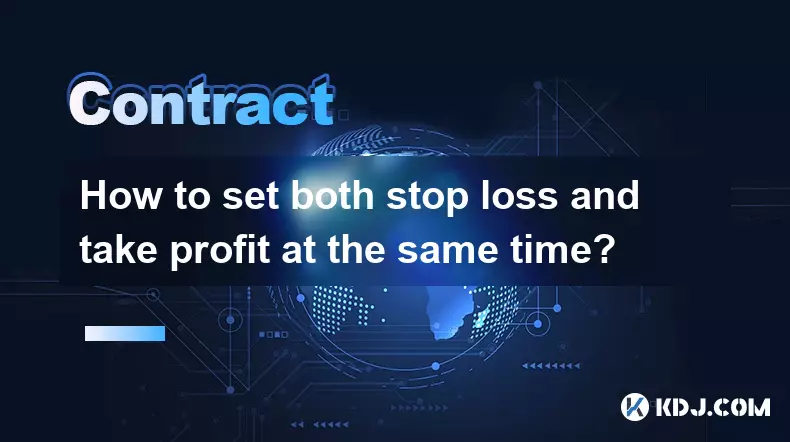-
 bitcoin
bitcoin $115139.818732 USD
-0.61% -
 ethereum
ethereum $4598.676579 USD
-1.26% -
 xrp
xrp $3.029978 USD
-2.08% -
 tether
tether $1.000434 USD
0.01% -
 solana
solana $240.784980 USD
-1.13% -
 bnb
bnb $925.044734 USD
-0.61% -
 usd-coin
usd-coin $0.999772 USD
0.01% -
 dogecoin
dogecoin $0.277157 USD
-2.21% -
 tron
tron $0.348716 USD
-0.26% -
 cardano
cardano $0.885611 USD
-3.31% -
 hyperliquid
hyperliquid $53.547629 USD
-2.46% -
 chainlink
chainlink $24.053828 USD
-2.67% -
 ethena-usde
ethena-usde $1.001251 USD
0.02% -
 sui
sui $3.671154 USD
-2.26% -
 avalanche
avalanche $29.401465 USD
-1.56%
How do crypto perpetual contracts work with examples?
Crypto perpetual contracts allow leveraged trading without expiry, using funding rates to align prices with spot, but carry liquidation risks if not managed carefully.
Aug 13, 2025 at 11:35 am

Understanding Crypto Perpetual Contracts
Crypto perpetual contracts are a type of derivative product that allows traders to speculate on the price of a cryptocurrency without owning the underlying asset. Unlike traditional futures contracts, which have an expiration date, perpetual contracts do not expire, enabling traders to hold positions indefinitely. This makes them highly attractive for both short-term traders and long-term investors. The core mechanism relies on funding rates to keep the contract price closely aligned with the spot price of the cryptocurrency. These contracts are traded on platforms such as Binance, Bybit, and OKX, and support leverage, allowing traders to open positions larger than their initial capital.
Key Components of Perpetual Contracts
To fully grasp how perpetual contracts function, it's essential to understand their core components:
- Leverage: Traders can amplify their exposure using borrowed funds. For example, with 10x leverage, a $1,000 margin can control a $10,000 position. While this increases profit potential, it also magnifies losses.
- Margin: This is the collateral deposited to open and maintain a leveraged position. It comes in two forms: initial margin (required to open) and maintenance margin (minimum to avoid liquidation).
- Mark Price: Used to prevent manipulation, the mark price is derived from the average spot price across major exchanges. It determines liquidation levels and unrealized P&L.
- Funding Rate: A periodic payment exchanged between long and short holders to tether the contract price to the spot price. If the contract trades above spot, longs pay shorts, and vice versa.
How Funding Rates Work
The funding rate is a critical mechanism in perpetual contracts. It ensures the contract price does not deviate significantly from the underlying asset’s spot price. Funding is exchanged every 8 hours on most exchanges. The rate is calculated using two components: the interest rate offset and the premium index.
For example, suppose the BTC perpetual contract is trading at $65,000 while the spot price is $64,500. This positive spread indicates excess long positions. The funding rate becomes positive, meaning longs pay shorts. If a trader holds a $10,000 long position and the funding rate is 0.01%, they will pay $1 every 8 hours. Conversely, if the contract trades below spot, shorts pay longs. This dynamic encourages balance in market sentiment.
Long and Short Positions with Real Examples
Let’s examine practical trading scenarios.
Example 1: Going Long with Leverage- A trader believes Bitcoin will rise from $60,000.
- They deposit $1,000 as margin on Bybit.
- They open a long position with 20x leverage, controlling $20,000 worth of BTC.
- If BTC rises to $63,000 (5% increase), the position gains $1,000 (5% of $20,000), doubling their margin.
- However, if BTC drops to $58,800 (2% drop), the loss is $400, potentially triggering liquidation if maintenance margin is breached.
- Ethereum is at $3,000, and the perpetual contract trades at $3,030.
- A trader opens a short position of $15,000 with 10x leverage, using $1,500 margin.
- Since the contract is above spot, the funding rate is positive.
- The trader receives funding payments every 8 hours from long holders.
- If ETH drops to $2,850, the profit is $750 (5% of $15,000), plus accumulated funding income.
Liquidation and Risk Management
Liquidation occurs when a trader’s margin falls below the maintenance threshold. Exchanges automatically close the position to prevent negative balances. For instance, with 20x leverage, the maintenance margin might be 0.5%. If the market moves against the position and equity drops below this level, liquidation is triggered.
Risk mitigation strategies include:
- Using stop-loss orders to limit downside.
- Avoiding maximum leverage to withstand volatility.
- Monitoring liquidation price, visible on trading interfaces.
- Choosing cross-margin (uses entire wallet balance) or isolated margin (limits risk to allocated funds).
For example, a trader with a long BTC position at $60,000 using 20x leverage might have a liquidation price around $57,000. A sudden flash crash could trigger automatic closure, emphasizing the need for caution.
Trading Interface and Execution Steps
To trade perpetual contracts on Binance:
- Log in and navigate to the Futures section.
- Select USDⓈ-M Futures for stablecoin-settled contracts.
- Choose a pair like BTC/USDT.
- Set leverage using the slider (e.g., 10x).
- Decide between limit, market, or stop-limit order types.
- Enter the order size in USDT or number of contracts.
- Click Buy/Long or Sell/Short to execute.
After execution:
- Monitor unrealized P&L based on mark price.
- Check funding countdown to anticipate payments.
- Adjust take-profit and stop-loss levels dynamically.
- Use position mode (hedge or one-way) depending on strategy.
Frequently Asked Questions
What happens if I hold a perpetual contract during high volatility?During high volatility, liquidation risks increase due to rapid price swings. The mark price may spike, triggering stop-losses or automatic closures. Funding rates can also surge if the contract price diverges significantly from spot, increasing holding costs.
Can I withdraw funds used as margin in a live perpetual position?No, margin allocated to an open position is locked and cannot be withdrawn until the position is closed. In isolated margin mode, only the assigned amount is locked. In cross-margin, the entire wallet balance acts as collateral, reducing available funds for other trades.
How is the funding rate determined on different exchanges?Each exchange uses a formula combining the interest rate component (often negligible for crypto) and the premium index, which reflects the difference between contract and spot prices. The rate is updated every minute, with payments settled every 8 hours. For example, Binance calculates it as (Premium × 3) + Clamp(Interest Rate - Premium, -0.05%, 0.05%).
Is it possible to earn passive income through perpetual contracts?Yes, by consistently taking positions that receive funding payments. For instance, when the market is overly bullish and perpetual prices trade above spot, entering a short position allows you to collect funding from longs. However, this carries directional risk and should not be considered risk-free income.
Disclaimer:info@kdj.com
The information provided is not trading advice. kdj.com does not assume any responsibility for any investments made based on the information provided in this article. Cryptocurrencies are highly volatile and it is highly recommended that you invest with caution after thorough research!
If you believe that the content used on this website infringes your copyright, please contact us immediately (info@kdj.com) and we will delete it promptly.
- Vietnam Crypto: Navigating the Virtual Asset Landscape in 2025
- 2025-09-15 16:45:12
- Capital B's Bitcoin Treasury Acquisition: A Bold Move in the Crypto Space
- 2025-09-15 16:25:16
- Pakistan Crypto Exchanges: Navigating the Future of Digital Assets
- 2025-09-15 16:45:12
- Trump Media, MAGACOIN, and Crypto Presales: What's the Deal?
- 2025-09-15 16:50:01
- Kart Rumble: Your Guide to Potentially 100x-ing Your Earnings in 2025
- 2025-09-15 16:50:01
- Chasing 100x Gains: Are Crypto Investors on the Right Track?
- 2025-09-15 16:50:01
Related knowledge

How to deploy a smart contract?
Sep 11,2025 at 10:18am
Understanding the Basics of Smart Contract Deployment1. A smart contract is a self-executing program stored on a blockchain, most commonly deployed on...

What is Ethereum smart contract?
Sep 14,2025 at 07:37am
Understanding Ethereum Smart Contracts1. Ethereum smart contracts are self-executing agreements coded directly into the blockchain. These digital prot...

How to learn smart contract development?
Sep 09,2025 at 02:18am
Understanding the Foundation of Smart Contracts1. Smart contract development begins with a solid understanding of what smart contracts are—self-execut...

What is an example of a smart contract?
Sep 13,2025 at 09:36pm
Understanding Smart Contracts in the Cryptocurrency EcosystemSmart contracts are self-executing agreements with the terms directly written into code. ...

What is post-only order in crypto?
Sep 15,2025 at 03:18am
Understanding Post-Only Orders in Cryptocurrency Trading1. A post-only order is a type of limit order used on cryptocurrency exchanges that ensures th...

How to set both stop loss and take profit at the same time?
Sep 06,2025 at 04:36pm
Understanding Simultaneous Stop Loss and Take Profit Orders1. Placing both stop loss and take profit orders at the same time is a standard practice in...

How to deploy a smart contract?
Sep 11,2025 at 10:18am
Understanding the Basics of Smart Contract Deployment1. A smart contract is a self-executing program stored on a blockchain, most commonly deployed on...

What is Ethereum smart contract?
Sep 14,2025 at 07:37am
Understanding Ethereum Smart Contracts1. Ethereum smart contracts are self-executing agreements coded directly into the blockchain. These digital prot...

How to learn smart contract development?
Sep 09,2025 at 02:18am
Understanding the Foundation of Smart Contracts1. Smart contract development begins with a solid understanding of what smart contracts are—self-execut...

What is an example of a smart contract?
Sep 13,2025 at 09:36pm
Understanding Smart Contracts in the Cryptocurrency EcosystemSmart contracts are self-executing agreements with the terms directly written into code. ...

What is post-only order in crypto?
Sep 15,2025 at 03:18am
Understanding Post-Only Orders in Cryptocurrency Trading1. A post-only order is a type of limit order used on cryptocurrency exchanges that ensures th...

How to set both stop loss and take profit at the same time?
Sep 06,2025 at 04:36pm
Understanding Simultaneous Stop Loss and Take Profit Orders1. Placing both stop loss and take profit orders at the same time is a standard practice in...
See all articles





















![Trump WLFI token private key collision project, can use multiple windows and claim to be a single window income of four digits [Protocol script + usage tutorial] #Make money at home#Make money at side business Trump WLFI token private key collision project, can use multiple windows and claim to be a single window income of four digits [Protocol script + usage tutorial] #Make money at home#Make money at side business](/uploads/2025/09/15/cryptocurrencies-news/videos/trump-wlfi-token-private-key-collision-project-multiple-windows-claim-single-window-income-digits-protocol-script-usage-tutorial-money-money-business/68c76555f1557_image_500_375.webp)




















































